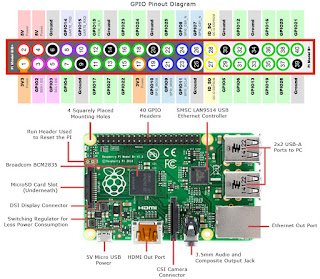In a recent post I presented the equation for energy incident on a solar panel (Sm).
Here I present the set of equations used to calculate sunrise, sunset, and solar elevation and azimuth.
=============================================================
#This particular set was extracted from an Excel spreadsheet made available by NOAA.
#360 deg/2*pi=57.29578
#if in radians, do sin(x/r) to get degrees
#sin(45d)=.7071
#sin(45r)=0.8509
LT: Local Tiime
UT:Universal Time
TZ:Time Zone
LT=UT+TZ
JDg1=367*Y-int(7*(Y+int((M+9)/12))/4)-int(3*(int((Y+(M-9)/7)/100)+1)/4)+int(275*M/9)+D+1721028.5+UT/24
JDg2=367*Y-int(7*(Y+int((M+9)/12))/4)+int(275*M/9)+D+1721013.5+UT/24
#For the Day:
#B3=Latitude, + to N
#B4=Longitude + to E
#B5=Time Zone + to E ( calculations use TZ)
#B7=Date
#H=Blank
#--------------------------
#D2=date
=date, mm/dd/yyyy , Calculations use JD
#E2=T past local midnight (used in TST and Elev refraction calc)
#sum of 0.1/24 from midnight to current with .1/24 increments (fraction of the day in tenths of an hour ; 6 min = 0.0041666 day)
=LT/24
# In the JD, the previous day +.5 is midnight since the calendar sarts at noon.
#F2=Julian Day
=D2+2415018.5+E2-TimeZone(TZ)/24
JDg2=D2+2415018.5+E2-TimeZone(TZ)/24
#G=Julian , used in other functions, translated into radians. Functions that make up S and T use G (P,R,Q).
=(F2-2451545)/36525
#H=Blank
#I=Geom Mean Long Sun
=MOD(280.46646+G2*(36000.76983+G2*0.0003032),360)
#mod()=a-int(a/b)*b
#J=Geometric Mean Anomaly of the Sun
=357.52911+G2*(35999.05029-0.0001537*G2)
#K=Eccentricity of Earth orbit
=0.016708634-G2*(0.000042037+0.0000001267*G2)
#L=Sun Eq of Ctr
=SIN(RADIANS(J2))*(1.914602-G2*(0.004817+0.000014*G2))+SIN(RADIANS(2*J2))*(0.019993-0.000101*G2)+SIN(RADIANS(3*J2))*0.000289
#M=Sun True Long degrees
=I2+L2
#N=Sun True Anomaly degrees
=J2+L2
#O=Sun Radius Vector, A.U.
=(1.000001018*(1-K2*K2))/(1+K2*COS(RADIANS(N2)))
#P=Sun Apparent Long
=M2-0.00569-0.00478*SIN(RADIANS(125.04-1934.136*G2))
#Q=Mean Oblique Ecliptic degrees
=23+(26+((21.448-G2*(46.815+G2*(0.00059-G2*0.001813))))/60)/60
#R=Oblique Correction factor
=Q2+0.00256*COS(RADIANS(125.04-1934.136*G2))
#S=Right Ascension degrees
=DEGREES(ATAN2(COS(RADIANS(P2)),COS(RADIANS(R2))*SIN(RADIANS(P2))))
#T=Declination in degrees
=DEGREES(ASIN(SIN(RADIANS(R2))*SIN(RADIANS(P2))))
#U=var y
=TAN(RADIANS(R2/2))*TAN(RADIANS(R2/2))
#V=EoT minutes
=4*DEGREES(U2*SIN(2*RADIANS(I2))-2*K2*SIN(RADIANS(J2))+4*K2*U2*SIN(RADIANS(J2))*COS(2*RADIANS(I2))-0.5*U2*U2*SIN(4*RADIANS(I2))-1.25*K2*K2*SIN(2*RADIANS(J2)))
#W=HA Sunrise degrees
=DEGREES(ACOS(COS(RADIANS(90.833))/(COS(RADIANS(Lat))*COS(RADIANS(T2)))-TAN(RADIANS(Lat))*TAN(RADIANS(T2))))
#X=Sun noon LST
=(720-4*Lon-V2+TZ*60)/1440
#Y=Sunrise time
#Y=Sunrise time
Y2=X-W*4/1440
#Z=Sunset time
Z2=X+W*4/1440
#AA2=Sunlight duration
=8*W2
#AB2=TST
=MOD(E2*1440+V2+4*Lon-60*TZ,1440)
#AC2=Hour Angle
=IF(AB2/4<0,AB2/4+180,AB2/4-180)
#AD2=Zenith
=DEGREES(ACOS(SIN(RADIANS(Lat))*SIN(RADIANS(T2))+COS(RADIANS(Lat))*COS(RADIANS(T2))*COS(RADIANS(AC2))))
#AE2= Sun elevation in degrees
90-AD2
#AF2=Atmospheric refraction un degrees
=IF(AE2>85,0,IF(AE2>5,58.1/TAN(RADIANS(AE2))-0.07/POWER(TAN(RADIANS(AE2)),3)+0.000086/POWER(TAN(RADIANS(AE2)),5),IF(AE2>-0.575,1735+AE2*(-518.2+AE2*(103.4+AE2*(-12.79+AE2*0.711))),-20.772/TAN(RADIANS(AE2)))))/3600
#AG2=Sun Elevation corrected for refraction
=AE2+AF2
#AH2=Sun Azimuth degrees clockwise from North
=IF(AC2>0,MOD(DEGREES(ACOS(((SIN(RADIANS(Lat))*COS(RADIANS(AD2)))-SIN(RADIANS(T2)))/(COS(RADIANS(Lat))*SIN(RADIANS(AD2)))))+180,360),MOD(540-DEGREES(ACOS(((SIN(RADIANS(Lat))*COS(RADIANS(AD2)))-SIN(RADIANS(T2)))/(COS(RADIANS(Lat))*SIN(RADIANS(AD2))))),360))
=====================================================================
















